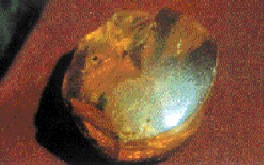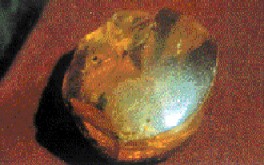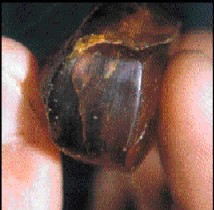
New Horizons of Amber [Archives:1999/41/Last Page]
October 11 1999
Ali Qhasim Abdu Abn Al-A’beda
The curiosity and the ambition which I had harbored since I was a child, for earning distinction have propelled me to realize my dream. I have collected more than fifty pieces of excavations. These pieces have a peculiar insects inside.

Biologists have discovered new kinds of insects inside the amber. This has helped scientists in this field to throw light on the life cycle of insects. Amber is a mucilaginous material which comes out from the roots of trees. Then, it becomes a solid material, which keeps and protects insects from natural changes for a long period of time. Andross, a biologist in London museum has done seminal studies in this field.


Few of this material is seen in Canada, Siberia, United States of America, Burma, Mexico and Sakhalia. Amber takes yellow and orange color. It is a heavy material which is useful for handicrafts industries. The oldest instance of amber is 300 million years old, while the oldest which contains insects belongs to 120 million years.

——
[archive-e:41-v:1999-y:1999-d:1999-10-11-p:./1999/iss41/lastpage.htm]


